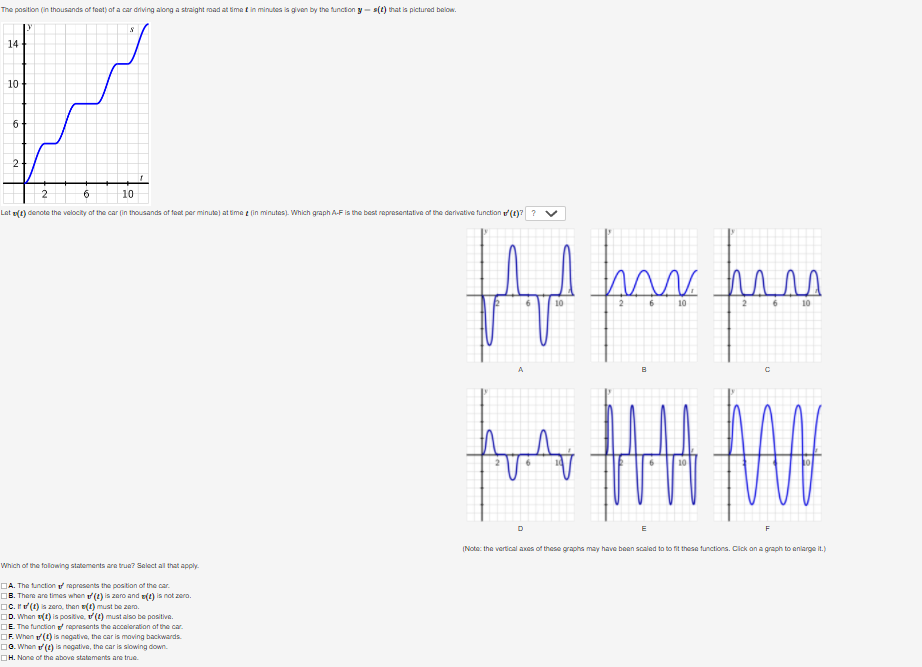me position (in thousands of feat) of a car aning along a straight rmad at ime tin minutes is givan by the tuncton y- s(t) mat is pictured beion. 14 10 6- 10 at m(t) doncte the velocity of the car in thousands of fast per minute) at time t (in minutes. Which graph AFis the best rapresertative of the derivative tuncion (t)? ?
me position (in thousands of feat) of a car aning along a straight rmad at ime tin minutes is givan by the tuncton y- s(t) mat is pictured beion. 14 10 6- 10 at m(t) doncte the velocity of the car in thousands of fast per minute) at time t (in minutes. Which graph AFis the best rapresertative of the derivative tuncion (t)? ?
Physics for Scientists and Engineers, Technology Update (No access codes included)
9th Edition
ISBN:9781305116399
Author:Raymond A. Serway, John W. Jewett
Publisher:Raymond A. Serway, John W. Jewett
Chapter3: Vectors
Section: Chapter Questions
Problem 3.62AP: After a ball rolls off the edge of a horizontal table at time t = 0, its velocity as a function of...
Related questions
Question
100%
How to solve?

Transcribed Image Text:The position (in thousands of feet) of a car driving along a straight mad at time t in minutes is given by the funcion y- s(t) that is pictured below.
14
10
6.
2
2
10
Let g(t) denote the velocity af the car (in thousands of feat per minute) at time e (in minutes). Which graph A-F is the best representative of the derivative function (t)? ?
2
6
10
2
6
10
E
(Note: the vertical axes of these grapha may have been scaled ta to fit these functions. Click an a graph to eniarge it.)
Which of the following statements are true? Seloct al that apply.
DA. The tunction rapresents the position of the car.
OB. There are times when (1) is zero and e(t) is not zera.
OC. r (1) is zero, then e(1) must be zara.
OD. When e(t) is positive, (1) must also be pasitive.
DE. The function represents the acceleration of the car.
OF. When (1) is nagative, the car is moving backwards.
DG. When (2) is negative, the car is siowing down.
DH. None of the abova statements are true.
Expert Solution
This question has been solved!
Explore an expertly crafted, step-by-step solution for a thorough understanding of key concepts.
This is a popular solution!
Trending now
This is a popular solution!
Step by step
Solved in 4 steps with 3 images

Recommended textbooks for you

Physics for Scientists and Engineers, Technology …
Physics
ISBN:
9781305116399
Author:
Raymond A. Serway, John W. Jewett
Publisher:
Cengage Learning

Physics for Scientists and Engineers, Technology …
Physics
ISBN:
9781305116399
Author:
Raymond A. Serway, John W. Jewett
Publisher:
Cengage Learning